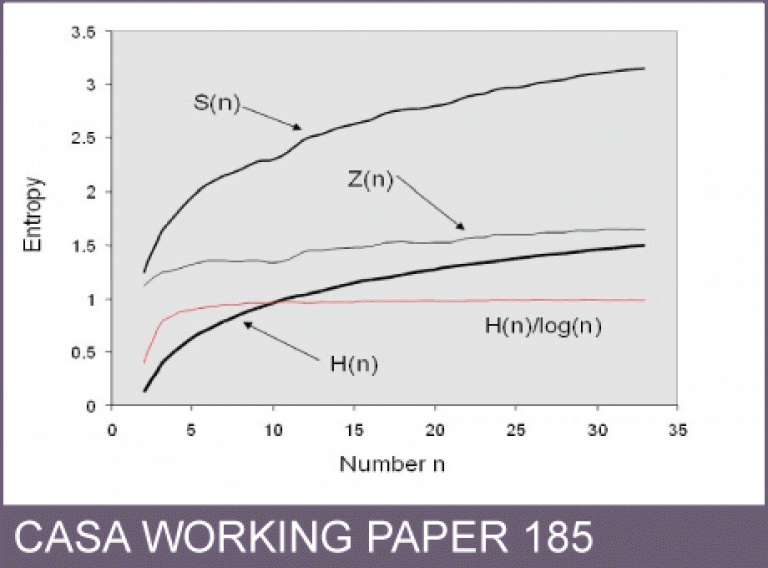CASA Working Paper 185

24 May 2012
Entropy, complexity and Spatial Information
We pose the central problem of defining a measure of complexity, specifically for spatial systems in general, city systems in particular. The measures we adopt are based on Shannon’s (1948) definition of information. We introduce this measure and argue that increasing information is equivalent to increasing complexity and we show that for spatial distributions, this involves a trade-off between the density of the distribution and the number of events that characterize it; as cities get bigger and are characterized by more events – more places or locations, information increases, all other things being equal. But sometimes the distribution changes at a faster rate than the number of events and thus information can decrease even if a city grows.
We develop these ideas using various information measures. We first demonstrate their applicability to various distributions of population in London over the last 100 years, then to a wider region of London which is divided into bands of zones at increasing distances from the core, and finally to the evolution of the street system that characterizes the built-up area of London from 1786 to the present day. We conclude by arguing that we need to relate these measures to other measures of complexity, to choose a wider array of examples, and to extend the analysis to two-dimensional spatial systems.
Authors: Michael Batty, Robin Morphet, Paolo Masucci, and Kiril Stanilov
Publication Date: 24th May 2012
RPS ID:
Download Working Paper 185. File size 1.2MB, PDF format.
 Close
Close

